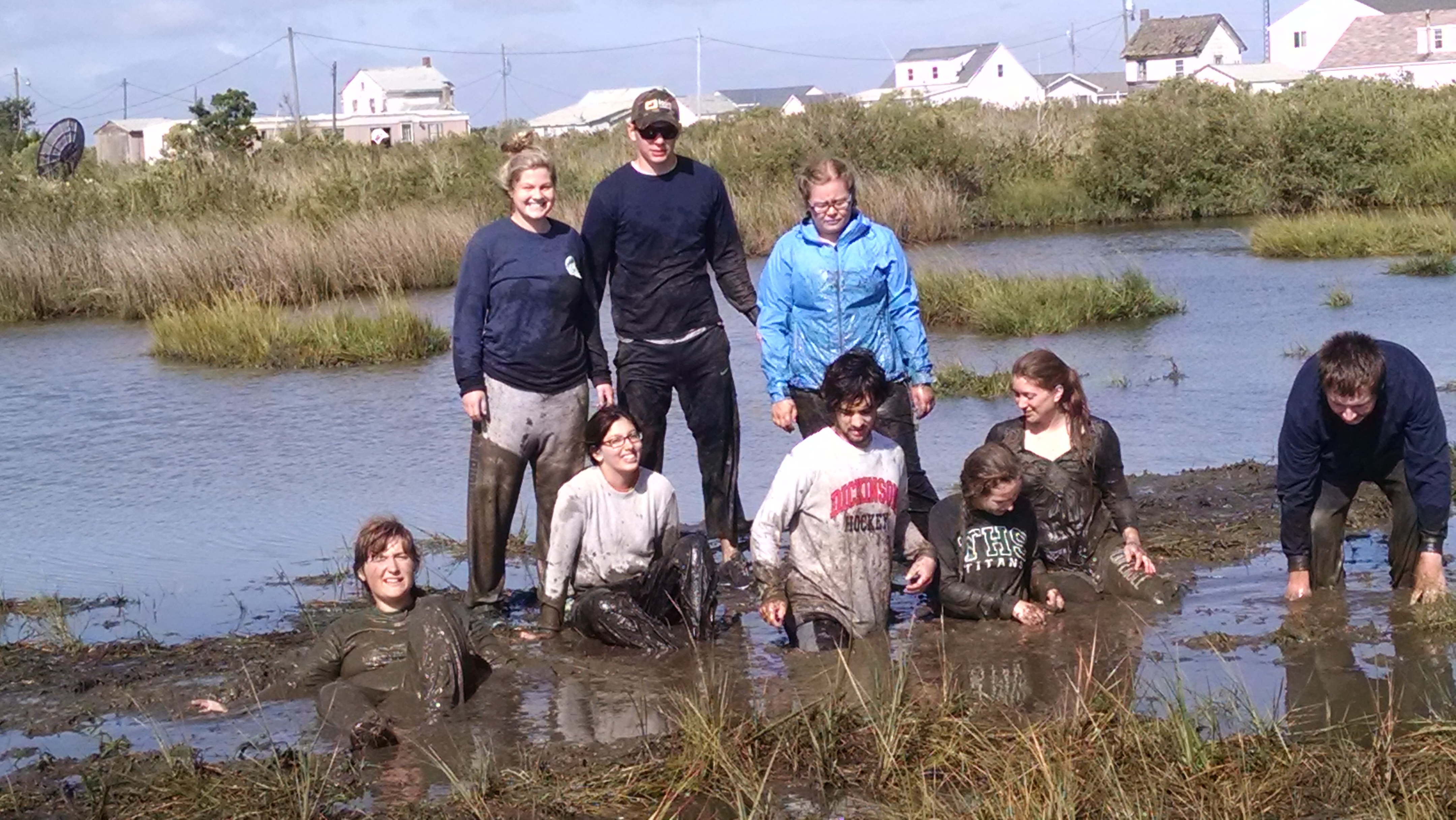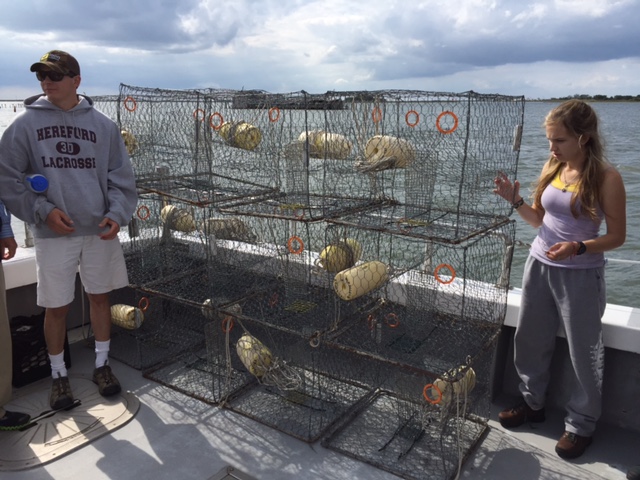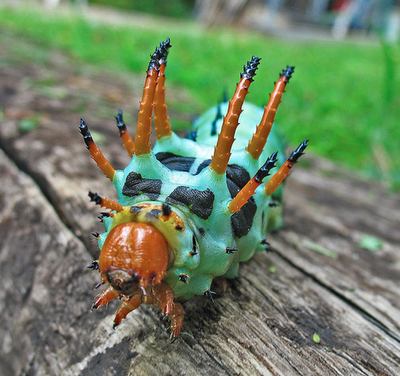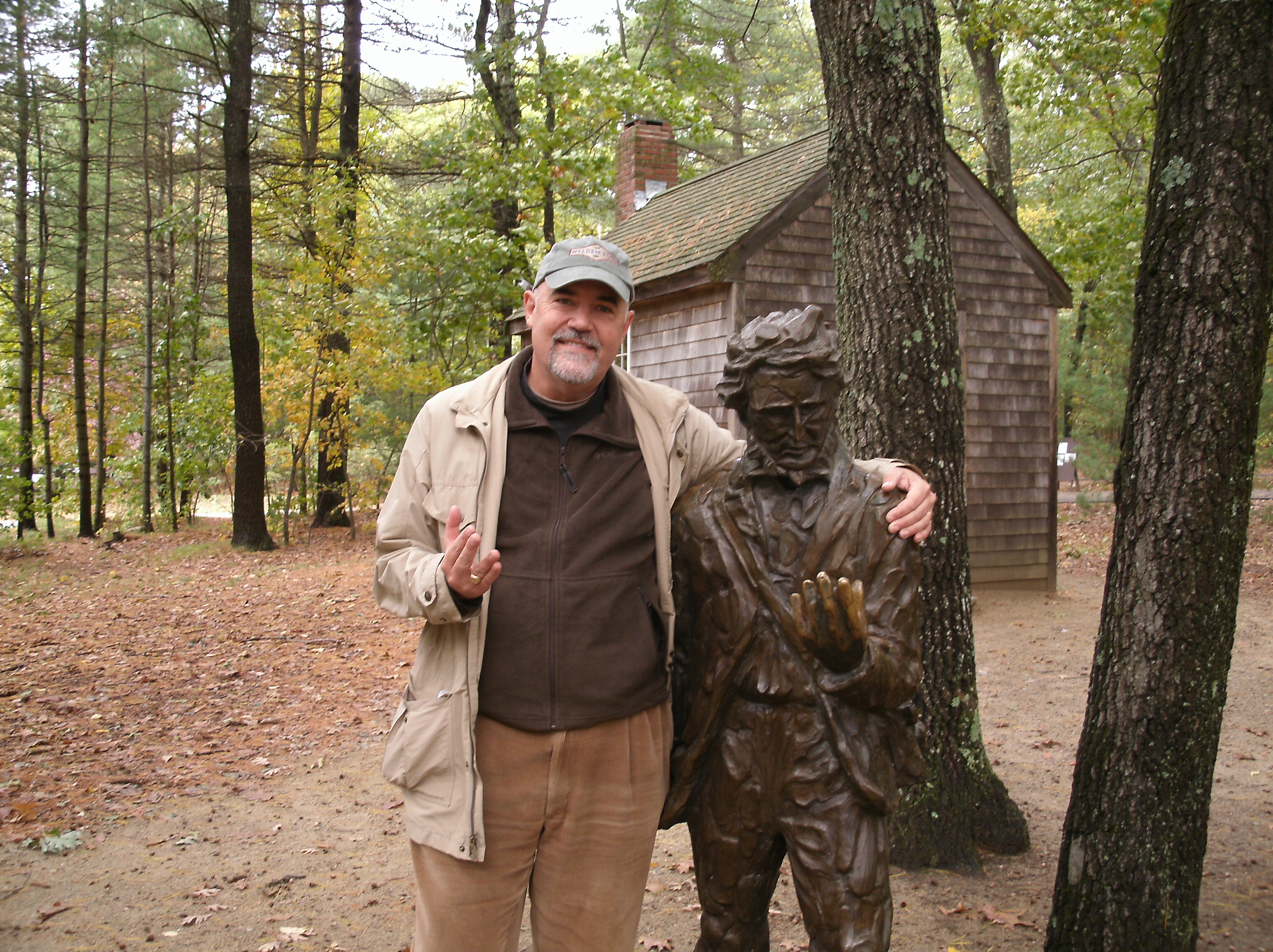Natural History Sustainability Mosaic II 2016
ENGL 212: Writing About Natural History
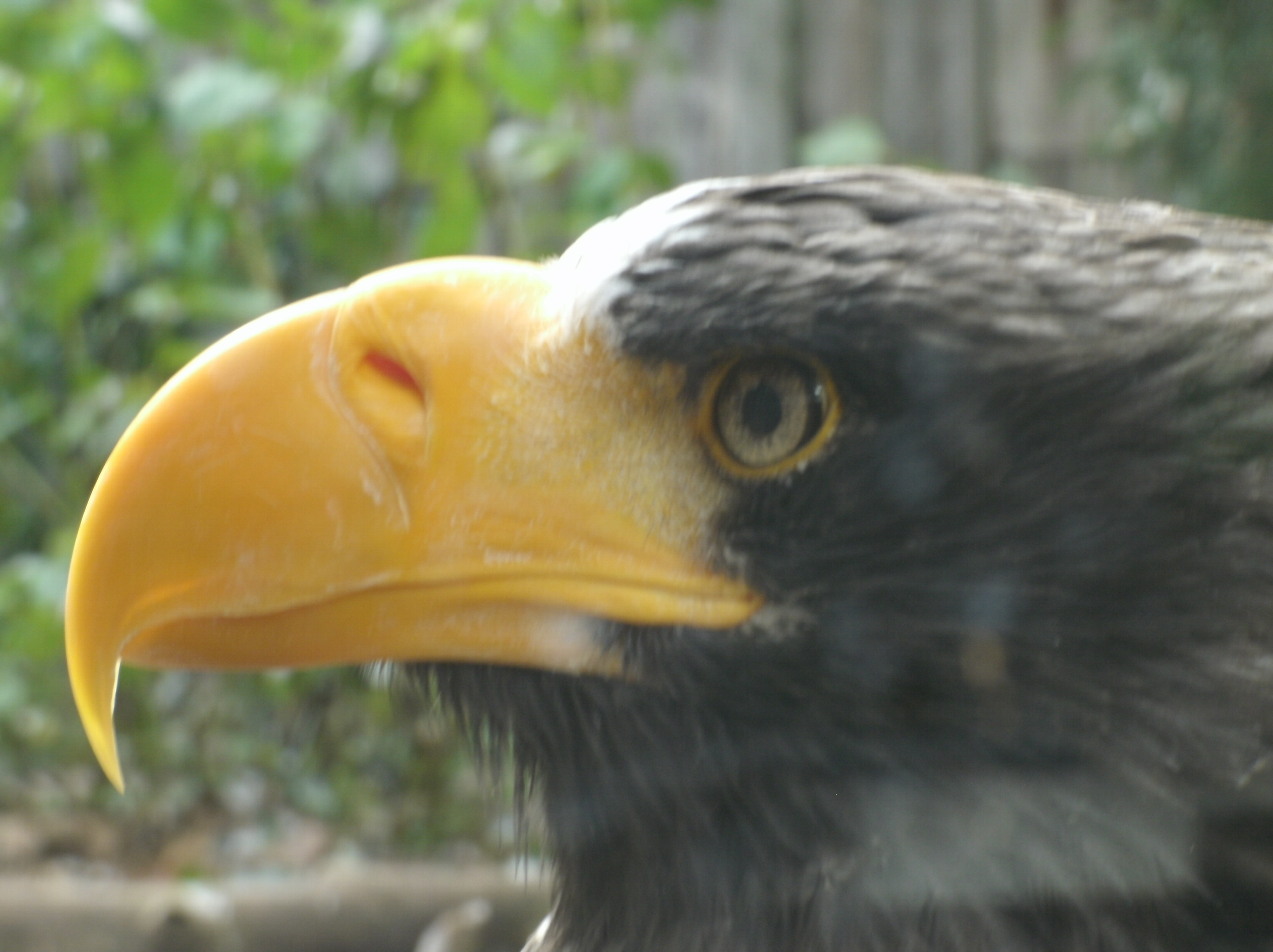
Steller’s sea eagle, the largest eagle in the world, a close genetic relative of North America’s own bald eagle and golden eagle.
Required Texts:
Fergus, Charles. Wildlife of Pennsylvania: And the Northeast.
Hacker, Diana. A Pocket Style Manual 5e.
Harrison, Ralph. The Elk of Pennsylvania. (Wingert)
Kolbert, Elizabeth. The Sixth Extinction: An Unnatural History.
Leopold, Also. A Sand County Almanac: And Sketches Here and There.
Nichols, Ashton. Beyond Romantic Ecocriticism: Toward Urbanatural Roosting.
Warner, William. Beautiful Swimmers: Watermen, Crabs, and the Chesapeake Bay.
Put your last name, first name here. Natural History Field Notebook.
Online dictionaries: Oxford English for advanced definitions: http://www.oed.com
Merriam-Webster for regular use: http://www.britannica.com/ Dickinson website.
Handouts and required written classroom exercises
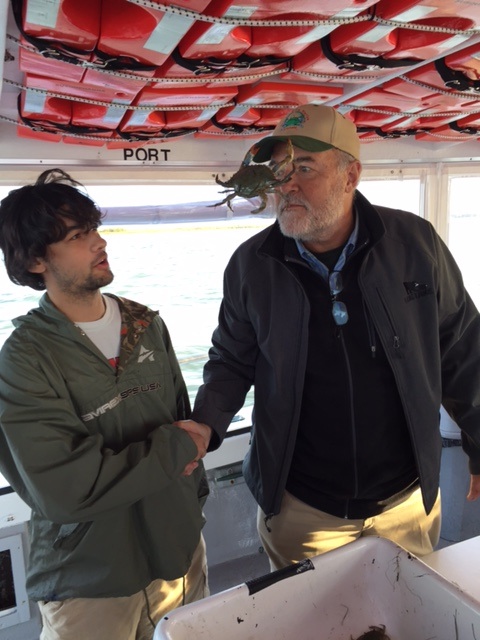
A bemused Connor Liu meets a stunned Captain “Crab-Hat” Nichols on the deck of the Chesapeake Bay boat Susquehanna.
Course Aims and Expectations:
This course is designed to improve your skills as a writer of expository prose by emphasizing the genre of natural history writing. We will concentrate on a variety of writing problems and techniques, emphasizing specific skills necessary to a wide range of writing tasks: description, summary, narration, argumentation, analysis, and interpretation. In all cases, our focus will be on the natural world, natural history, and human connections to that world. Our numerous field trips to museums and field experiences in the wilds of Pennsylvania and beyond (Virginia, North Carolina) will form the basis of much of our writing. You will keep your own natural history journal that begins today and ends on the final day of classes, when it will be handed in; this journal will record, analyze, and otherwise create an experiential and intellectual document of your experiences with the nonhuman world during our entire semester. So, some of your writing will take place in the field or near the field, some more of it in the library or at your desk. Discussions of essay reading assignments will be supplemented by group workshop sessions and individual tutorials. Students will have the opportunity to critique one another’s work and to compare their essays to works by natural history writers of the past and present. The course aims to concentrate your attention on the precise stylistic details that lead to effective writing.
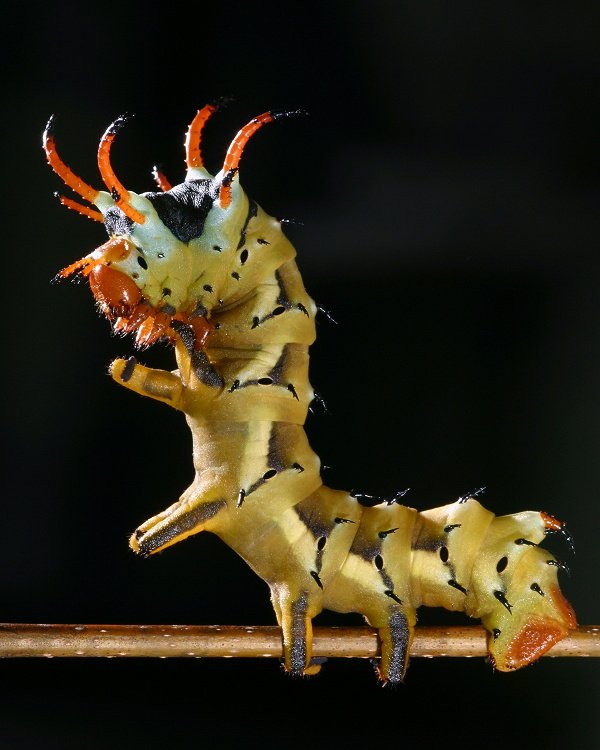
The horrendously beautiful hickory horned devil–one of the largest caterpillars in North America–soon to become a regal moth: a.k.a. the royal walnut moth.
Essay Requirements:
–All essays must be typed: one-inch margins & double-spaced
–Assignments will specify a precise length for each essay
–Essays must be stapled or paper-clipped together
–Title page must include title, the author’s name, and the due date
–Essays due in class at 10:30 a.m. on the syllabus indicated date
–NO LATE PAPERS (or drafts) WILL BE ACCEPTED
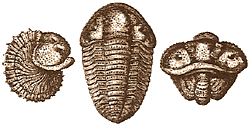
Trilobites are one of the most widespread and successful creatures ever to live on earth. They roamed the seas for over two hundred million years and finally disappeared as part of a mass extinction as the Permian era ended. Today, they remain only as fossil specimens in museums, private collections, and in various geological sites around the world.
Web Sites for Writers and Nature Writers
English Department Writing Guidelines
Virginia Commonwealth University Nature Writing Web Links
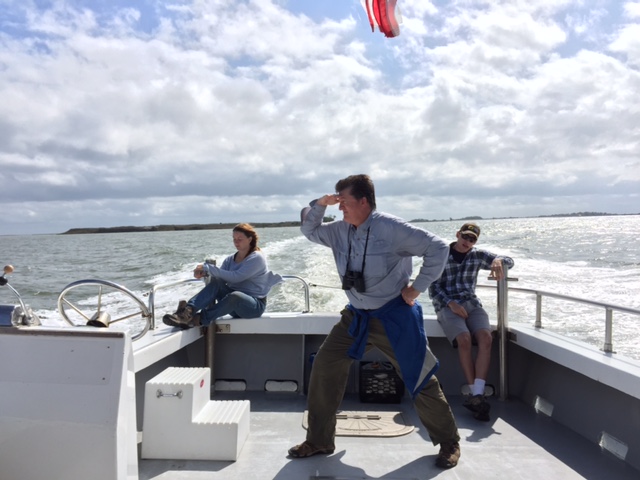
Captain Marcus Key piratically surveys the horizon; Smith Island (pop. c. 140) is in the distance (behind Cecilie Macpherson and Joshua Reider).
Grading:
Grades will be based on the following distribution:
Essay 1 2 3 4 Revision In-Class Journal Exam-revision Writing : . 10 10 10 10 20 10 10 20 = 100%
Students must complete all of these requirements in order to receive credit for the course.
Class Meetings, Readings, & Due dates: (T Th 10:30 a.m., K 152)
_____________________
August 29 M: 9:30 -10:20 First class meeting of full Mosaic, Introduction, Kaufman 152
August 30 Tu: 10:30 a.m.-11:45 Syllabus in-class writing: what is “nature”? What is “natural history”?
September 1 Th: Continue with in-class writing and online nature writing.
_____________________
6 Tu Essay #1 due (a natural object: assignment sheet attached). Provisional grade is dropped if it goes up on September 22 version (see below).
8 Th Aldo Leopold, Sand County Almanac. xiii-xix, pp. 3-137. What is good nature writing?
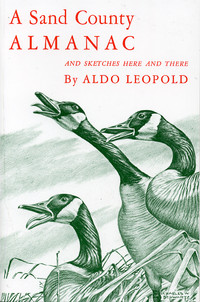
Here is one of the unarguable ur-texts, that is to say, a foundational document, of American nature writing . . .
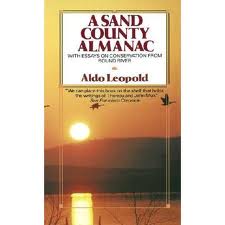
. . . and a great literary masterpiece, to boot. Sadly, Leopold died before it could be published, fighting a grass fire on a neighbor’s property.
______________________________________________________
13 Tu In-class exercise (sentences from essays). Hacker & Sommers, “Clarity,” pp. 1-18
15 Th Aldo Leopold, pp. 138 to end, Hacker & Sommers, “Grammar,” pp. 19-53,
______________________
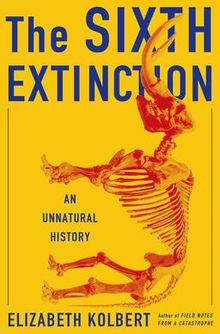
Elizabeth Kolbert’s book has become that surprising entity in the literary world: a scientific text that has become a bestseller — because of the quality of its writing and the importance of its ideas about homo sapiens’s human impact on the nonhuman species around us; the news is not good.
20 Tu 9:00 a.m. Class Visit: Discussion with nine (9) students in the Natural History Sustainability Mosaic II with Dr. Ashton Nichols, Dr. Marcus Key, and Gene Wingert, in Kaufman 152: Elizabeth Kolbert is The New Yorker’s nature writer and author, most recently of The Sixth Extinction: and Unnatural History: Bring two (2) written or typed-out questions for our guest, based on your reading of her remarkable work. Like Bill McKibben (The End of Nature) and John McPhee (The Control of Nature) before her, Kolbert’s book began as a series of essays in the magazine
22 Th Essay #1 revised (a natural object). Hand in for a final grade. Workshop.
____________________________
27 Tu No class (begin work on Essay #2)
29 Th Vocabulary handout. Hacker & Sommers, “Punctuation,” pp. 55-74
____________________________
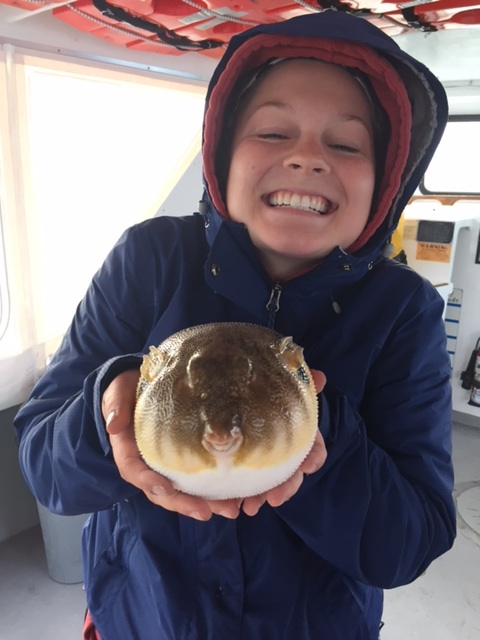
Jackie Geisler meets her new and sandpapery friend, Mr. Puffer Fish (Tetraodontidae Sphoeroides maculatus: the spotted spherical pufferfish).
October 4 T CHESAPEAKE BAY TRIP (Beautiful Swimmers, first half)
6 Th CHESAPEAKE BAY TRIP (finish Beautiful Swimmers for thorough discussion)
_____________________________

A remarkable photo, in which a rutting bull elk mistakes a bronze statue for a mating rival and attacks. Nature and culture, together again.
11 Tu ELK COUNTY TRIP Read and bring The Elk of Pennsylvania booklet
13 Th Finish Sand County Almanac (for class discussion)
14 Fri Essay # 2 due (narration: submit electronically)
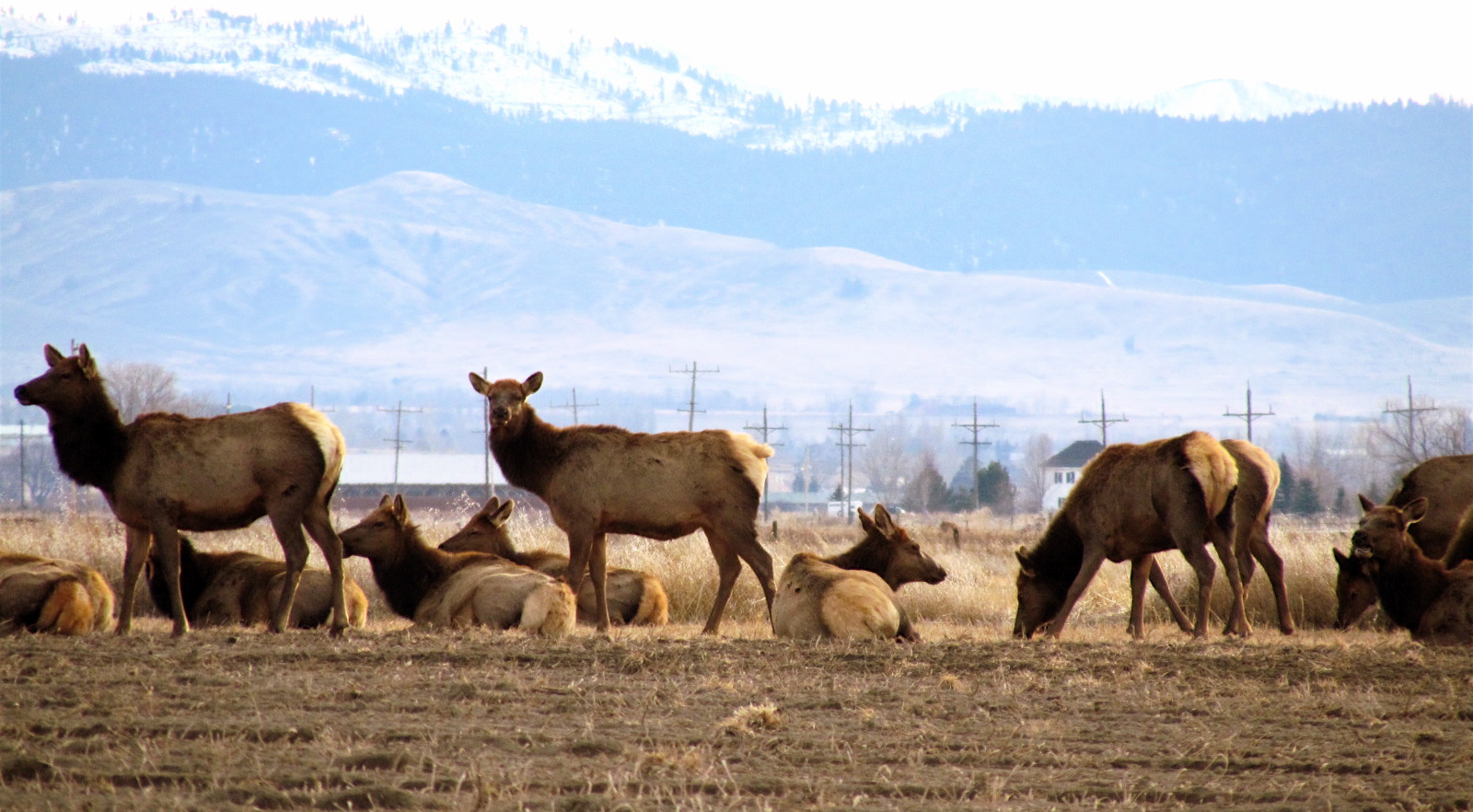
Are “wild” animals different when they are seen within sight of human development and habitation, as here in Montana?
______________________________
18 Tu FALL PAUSE (NO CLASS)
20 Th In-class exercise: “To see the wind with a man his eyes.” Hacker & Sommers, “Mechanics,” pp. 76-87 Charles Fergus, Wildlife of Pennsylvania. Pick a single CAPITALIZED SECTION from this book [ex. COYOTE, ELK, PUDDLE DUCKS, WILD TURKEY, LAND SALAMANDERS, POND AND MARSH TURTLES, WATER SNAKE]). At the start of class hand in a single double-spaced page about why this entry in Fergus’s book is well-written, using examples of language as details; then be prepared with notes to tell the class why your entry is well-written.
________________________________
23 Sunday: Depart for Kiptopeke, 10:00 a.m., Kaufman parking lot.
25 Tu Depart Kiptopeke for fossil sites near Jamestown, VA
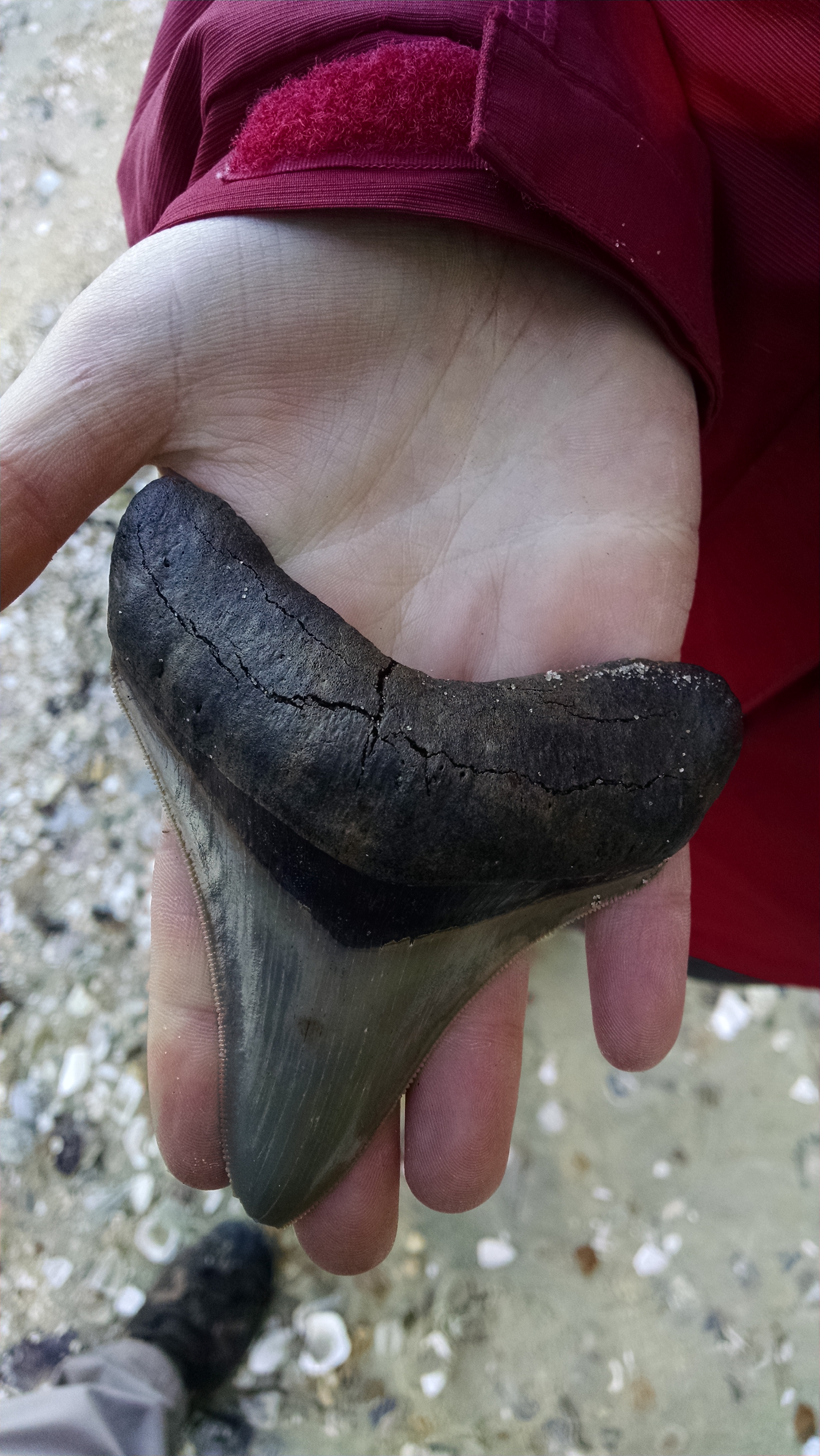
Jackie Geisler’s astonishing C. megalodon tooth, a remarkable rarity spotted by her watchful eye along a James River beach site!
26 Wed Return to Carlisle from Virginia
27 Th Hawks plus fossils plus assignment of Essay #3.
_________________________________
November 1 T Your field journal as a text. Bring your best paragraph, typed with copies for 12. Hacker & Sommers, “Research,” pp. 88-103
3 Th Continue field journals until nine (9) are complete. Vote.
__________________________________
8 T Essay #3 due, analyze Leopold’s or Kolbert’s writing style.
10 Th Animal rights: class positions, debate and discuss
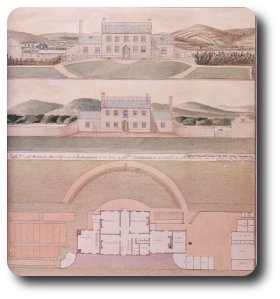
The Joseph Priestley House in Northumberland, PA, just up the Susquehanna River from Dickinson College. This drawing–the Lambourne Plan (1800)–was only rediscovered in 1983 in the Royal Society Archives in London; the house remains substantially the same today as it was when Priestley lived and died there in 1804. It contains the laboratory in which Priestley identified carbon monoxide and the room that once housed his library of over 1,500 volumes, one of the largest private libraries in America at the time.
__________________________________
15 T Essay #4 (bring draft notes for essay) Hacker & Sommers, Glossaries, pp. 259-278
16 Wed Depart for Pittsburgh–Phipps Conservatory on arrival
17 Th Carnegie Museum of Natural History (all day).
18 Fri National Aviary and return to Carlisle
___________________________________
22 T Beyond Romantic Ecocriticism xii-101. Link to your own experiences this term. In-class writing.
24 Th THANKSGIVING
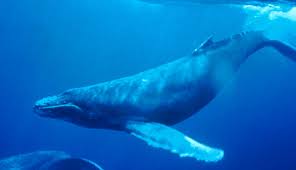
Whales are among the most amazing creatures on land or sea. Originally land mammals, they lost their legs and returned to the oceans more than 50 million years ago. They are more closely related to cows and to camels than to any of the fish species that surround them.
___________________________________
29 T Beyond Romantic Ecocriticism: Toward Urbanatural Roosting 104-208. Bring two (2) questions for the author
DECEMBER 1 Th FINAL CLASS Essay #4 due (animal rights: interpretation)
2 Fri Draft of IR/IS projects due 5:00 p.m. K 192
___________________________________
8 Th 1st Revision Due in Kaufman 192 by 2:00 P.M. (Essays 2-4)
___________________________________
13 Tu 1:30 p.m. Presentations of IR/IS project results
December 14 Wed FINAL EXAM (2nd Revision) due in Kaufman 192 by 5:00 p.m.
16 Friday Final IR/IS due 5:00 p.m., 6:00 p.m. FINAL MOSAIC DINNER (Creekside Farm: 580 McClures Gap Rd.)
___________________________________
Professor Ashton Nichols
Office Hours T Th 1-3 p.m. Kaufman 192, ext.1660
********************************************
Essay #1
A Natural Object
Spend at least one uninterrupted hour observing a natural object. The object can be large (star, sun, cloud, mountain), small (grain of sand, flower, ant, leaf) or in between (stream, tree, turkey vulture, rock). Your object should be one that had not been shaped or visibly affected by humans. You should observe it as carefully as possible. Do not engage in any other activity (conversation, writing, reading, etc.) during your observation. No Walkmans allowed!
What did you learn as a result of this experience? Write a 750-1,000 word (three to four typed pages) essay that explains to the members of our class what you knew at the end of this hour that you did not know before your observation began. Write with care and attention to the precise details of your experience. Your essay should have a thesis (a central controlling idea) and a clear organizational principle (chronological, psychological association, logical progression). Avoid errors of grammar, syntax, and spelling. Proofread you work carefully.
This essay is due at the start of class on Thursday, August 30, at 10:30 a.m. It should be typed, double-spaced, and should have a title page that includes a title that you have composed, your name, and the date.
NO LATE PAPERS WILL BE ACCEPTED
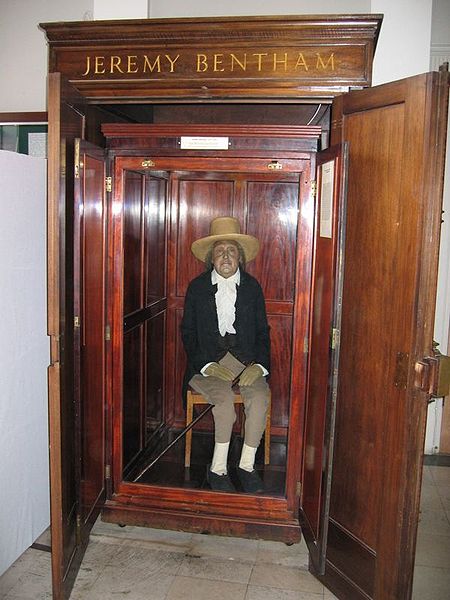
Jeremy Bentham, founder of utilitarian philosopher and early animal rights advocate. Here is Bentham’s “auto-icon” (his “skeletonized” remains plus a wax head, preserved forever in the lobby of University College London. Bentham suggested that these utilitarian uses of dead bodies would be helpful to future college decision-makers who could look at this suit of clothes inhabited by the remains of the great man and think, “What would Jeremy do?” Surely one of the strangest natural history specimens in the world. (Photo credit: Michael Reeve)
NATURAL HISTORY FIELD JOURNAL
For our “Writing About Natural History” class, you will keep your own natural history journal. It begins today and ends on the final day of classes, when it will be handed in to me. This journal will describe, narrate, analyze, interpret and otherwise create an experiential and intellectual record of your experiences with the nonhuman world during our entire semester. This field journal will have no length requirement; it must, however, be complete. Do not let us find that you have no entry about our trip to the Chesapeake Bay. Do not give your readers half-a-page about the largest herd of elk east of the Mississippi. This journal should accompany you on all of our trips away from Dickinson and Carlisle.
You are encouraged to share your journal with your classmates, with other students, with professors, or with your family. You should feel free to ask me for advice or suggestions during the term, and you should feel free to copy “commonplace” selections into your your own journal (from Thoreau or Annie Dillard Emerson, from Wordsworth or William Warner); just make sure that you always indicate when the words you write are not your own. Consider all of our texts, classes, and discussions as source material for your own journal writing. Writing is a social and cultural practice. Your own writing always benefits when you see yourself as part of a reading and writing group of interested literate individuals.
I may collect these journals at any time during the semester. I may ask to see the journal—individually or collectively—at any time. I may ask you to read aloud from your journal on any day our class meets. I may ask you to make use of your journal for additional formal or informal writing exercises. In short, this writing will be a key component of your work for this class. In addition to your five formal (graded) essays and two formal revisions, this journal will form the basis for the bulk of your writing during the term. Let your journal be influenced by the other writing we do in and for class. Let your style be influenced by the readings we are doing and reading that you are doing for your other Mosaic classes. Take advice from your classmates, or ignore it; take advice from me and your other professors.
Keep your journal in a separate notebook that can be handed in to me or can be shared among your classmates at any time. It must be written in ink (longhand or printed), or printed out on computer sheets that can be included in a journal format. You can keep your rough notes or drafts elsewhere. Your journal should be work that you would want to read aloud to the class or that someone else could read aloud. I will collect these on November 20 for the last time and will hand them back to you by the end of term.
Let me know if you have questions.
